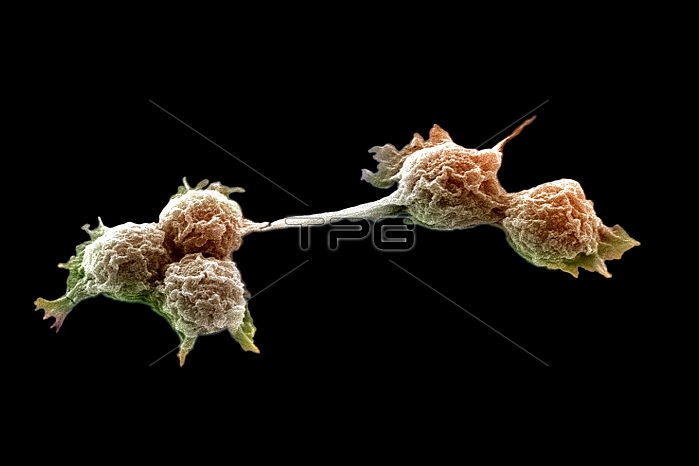
Free-living amoebae (FLA) in the Amoebozoa group are important causes of disease in humans and animals. Color enhanced SEM of a laboratory-grown potable (drinking) water biofilm, with the presence of Vermamoeba vermiformis (Hartmanella) cysts. Aquatic bacteria were grown as biofilm on steel for one week. V. vermiformis were then added, and phagocytized the bacteria that multiplied within vesicles that became cysts in which the bacteria will live until they rupture. Vermamoeba vermiformis a free-living amoeba (FLA), is widespread in nature and has been isolated from soil, freshwater, air, and a variety of engineered water systems. Two distinct life cycle forms are known for Vermamoeba vermiformis, the trophozoite, an active feeding cell that also multiplies, and cysts, which are inactive dormant cells. V. vermiformis has direct and indirect public health significance. The indirect public health significance of the organism is related to its role as a host for Legionella pneumophila, the causative agent of Legionnaires' disease. Magnification: 3592x.
| px | px | dpi | = | cm | x | cm | = | MB |
Details
Creative#:
TOP22223170
Source:
達志影像
Authorization Type:
RM
Release Information:
須由TPG 完整授權
Model Release:
N/A
Property Release:
No
Right to Privacy:
No
Same folder images:

 Loading
Loading